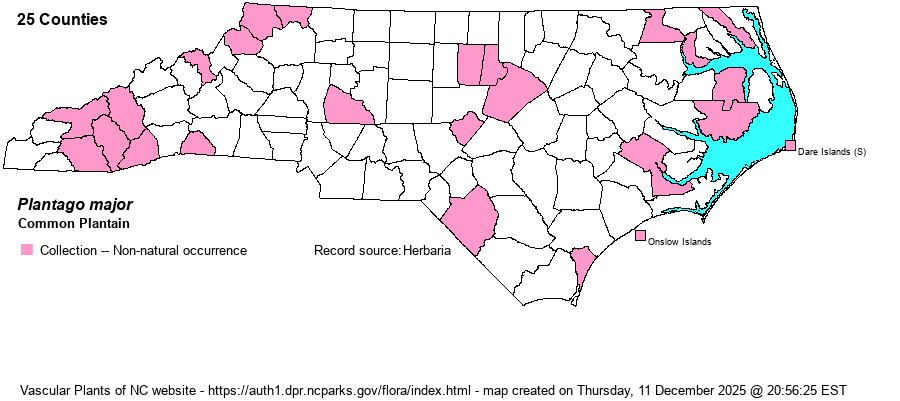| Author | L. | |
| Distribution | Scattered statewide, but aparently most often found in the Mountains and outer Coastal Plain; scattered records in the central half of the state. This is a curious distribution pattern, though it certainly ought to be collected in many more counties.
Native of Eurasia; in N.A. throughout. | |
| Abundance | Uncommon to infrequent in the Mountains and outer Coastal Plain; rare in the middle half of the state. | |
| Habitat | Roadsides, lawn weed, sidewalk weed, vacant lots, waste places, maritime stable dunes, fields. | |
| Phenology | Flowering and fruiting May-October. | |
| Identification | This species is typical of most plantains -- a basal rosette or group of leaves plus 1-many scapes with one flowering head per scape. In this species, the leaves are usually very broadly elliptic or ovate, with impressed ribs, and the leafstalk is entirely green or dusky. The heads are linear and long. It is very similar to the native and quite numerous P. rugelii in most respects, but that species has dull red leafstalks (as opposed to green). | |
| Taxonomic Comments | | |
| Other Common Name(s) | Broadleaf Plantain, Great Plantain, White-man's Foot | |
| State Rank | SE | |
| Global Rank | G5 | |
| State Status | | |
| US Status | | |
| USACE-agcp | FAC link |
| USACE-emp | FACU link |

